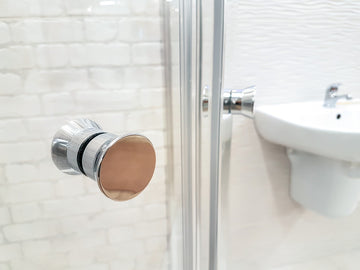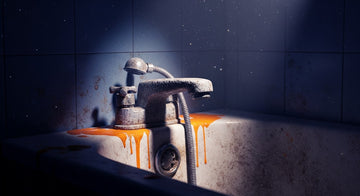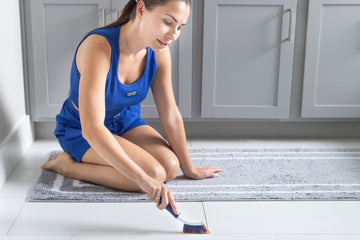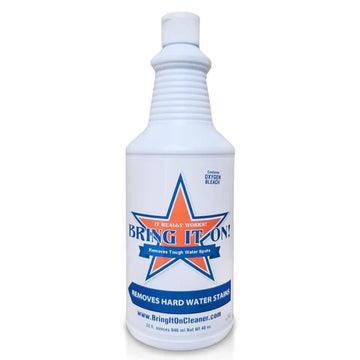In cleaning ourselves from head-to-toe using soap and water, we often leave our bathrooms dull and dirty with soap scum.
What is soap scum?
Soap scum is a greasy layer of white or gray substance often found on bathroom surfaces, such as on shower doors, bathroom fixtures, and tiled walls.
When the fatty content of our body soaps or hair care products react with water during shower, soap scum forms, and over time, they accumulate. They become more difficult to remove if they react with hard water, i.e. water supply with high concentration of mineral deposits.
How do you remove soap scum?
The easiest way to remove soap scum and avoid its build-up is by wiping it dry right after shower, when it’s still fresh and had not yet hardened up. But easier said than done for most of us, right? In reality, most of us hurry from the shower to our daily preoccupation or even to sleep. In such cases, a soap scum build-up is inevitable.
There are several homemade and commercial options for wiping out soap scum. Here are two of the most commonly used and preferred options that you can do at home.
1. White vinegar and dishwashing liquid mixture
- Mix 1 part distilled white vinegar with 1 part dishwashing liquid in a microwavable bowl.
- Microwave heat for 1 minute to ensure mixture and then allow it to cool.
- Stir the solution gently before pouring into a spray bottle.
- Spray mixture all over the glass doors and allow it to set for 15-30 minutes.
- Scrub off the scum using a non-abrasive sponge or cloth.
- Rinse with warm or hot water.
- Finally, wipe off excess water with a squeegee or microfiber cloth.
- Make a paste out of 1 cup baking soda and ¼ cup distilled white vinegar.
- Allow the fizz to subside then apply the paste all over the glass and ceramic surfaces.
- For a fiberglass surface, make sure to use a non-abrasive sponge or cloth. Remember that the baking soda is already a natural abrasive cleanser.
- Leave it on for about 15 minutes before rinsing it off well.
- Wipe excess water with a soft, dry cloth.
How do you maintain a soap scum-free bathroom?
Simply follow these practices as often as you can to keep your bathroom fresh and clean.
- After every shower, wipe water drippings off bathroom surfaces with a squeegee or microfiber cloth.
- Go for a liquid alternative to body bars. It’s easier to wash off because it’s in a more diluted state than a soap bar.
- Leave the door open to allow surfaces to dry much faster.
- After cleaning, apply gel gloss or car wax to surfaces where soap scum usually lands.
Frequently Asked Questions
What is the effect of the fizz when mixing baking soda and vinegar?
The fizz is a reaction between baking soda and vinegar, releasing carbon dioxide, but it's harmless and subsides after a while.
How can one prevent soap scum buildup after showers?
Wiping bathroom surfaces dry right after a shower can prevent soap scum from hardening and accumulating.
Are there homemade solutions to remove soap scum?
Yes, solutions like a mixture of white vinegar and dishwashing liquid or a paste of baking soda and white vinegar can effectively tackle soap scum.





